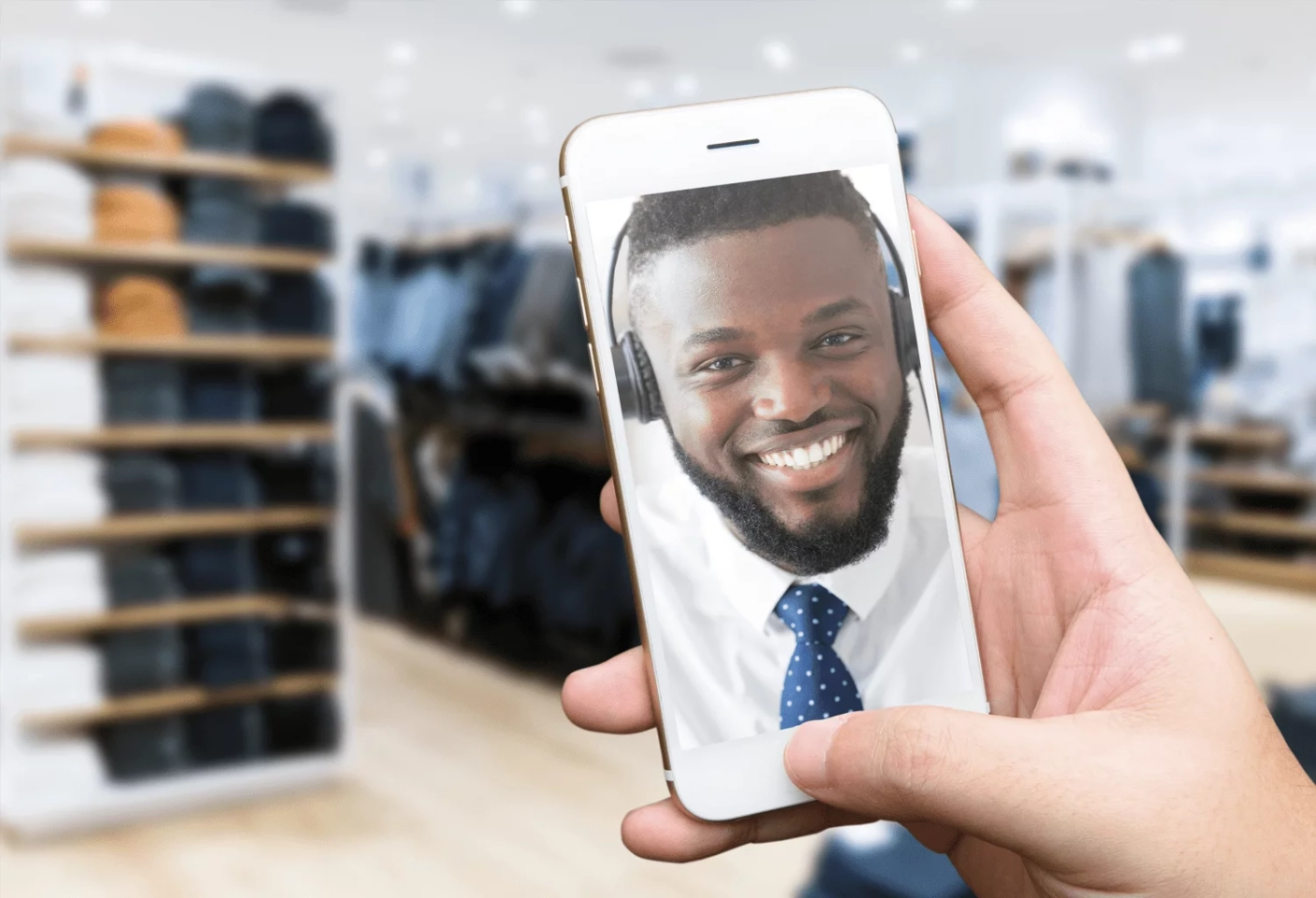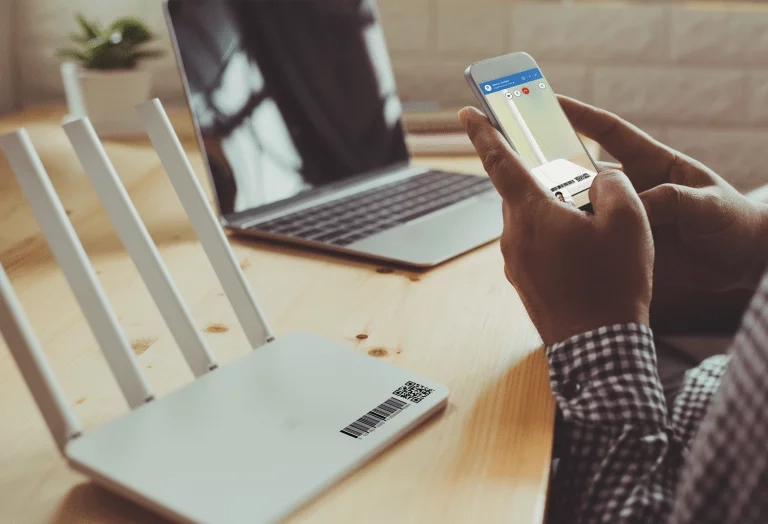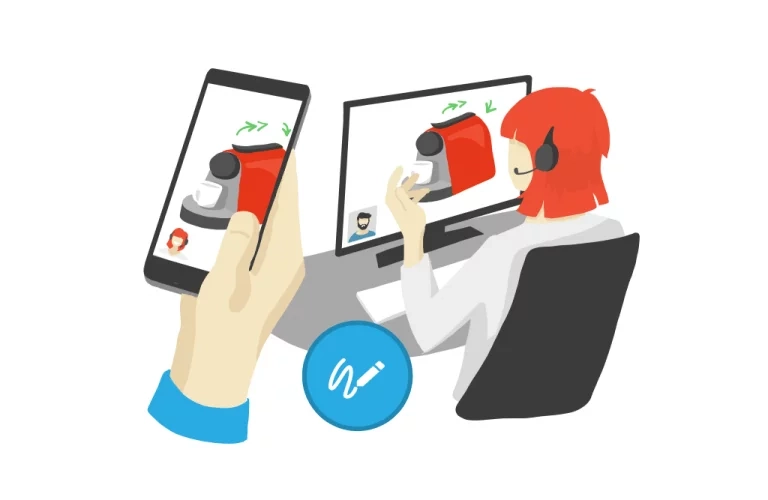Video call for customer relations:
what are the use cases?



The video call is a means of communication known by all. But when it is used by businesses, video calling also becomes a tool to improve customer relations. More specifically, video allows brands to enrich their omnichannel strategy and offer an exceptional experience to their customers. The reason why video calling is so interesting is because it can be easily deployed in a multitude of industries. The plurality of domains leads to the creation of new use cases. In this article, we propose an overview of the different uses of video calling for customer relations.
Real-time video enriches the customer experience online or in-store and strengthens customer relationships. By implementing a video calling solution, brands benefit from higher conversion rates and correlatively increased sales. Find out how to use video calling to increase your sales.
The video communication channel allows you to recreate the human experience initially lived in store, at a distance. With the video call, you can share information and interact with your customers as if you were face to face. Video is very useful for brands because it brings a brand’s products to life and makes them easier to discover for online shoppers.
In-store salespeople can assist customers online, show them a range of products, offer real-time demos and provide personalized advice. The customer can observe the product in its entirety: dimensions, color, material, etc. This remote showroom service provides customers with much more detail than a simple photo on a website.
This use case can easily be deployed in many sectors such as automotive, high-tech, household appliances, telephony, real estate, or fashion. This new method of distance selling is generally used for high-value goods or services that are not readily available or are geographically distant from the potential buyer. It can also be used for premium customers who do not necessarily want to travel.
The case of the real estate sector is very representative. Some real estate agencies use video to remotely visit a property. The agent and the client connect remotely via the video conferencing solution and the visit can begin. The agent who is on site presents the property to the client thanks to the real-time video. If the customer wants more information, he can ask the agent to show him a room or to give him more details. Of course, this does not replace a physical visit of the property, but it allows the client to know if he wants to go further in the process and therefore avoids a useless trip if the property does not correspond to him.

Enrich the customer experience and assist your customers as if they were there, thanks to video. Deploy an online service that connects Internet users browsing your website with a specialized personal shopper. With a single click, the advisor and the customer access the video and can start the appointment. Video makes communication easier, facilitates the understanding of the customer’s needs by the agents and provides real expertise from a distance. Applicable in all sectors of activity, personal shopping is a real asset for brands wishing to satisfy all their customers and develop their omnichannel strategy.
In the fashion sector, online personal shopping is increasingly used. Indeed, it allows customers who do not want to or cannot go to the store to benefit from personalized advice. During the video, the advisor asks the customer to describe his style, his morphology, his budget, his desires and his needs. Based on this information, the advisor can find the best pieces for the customer.
In the first two cases, it is the customer who is at a distance. However, it is possible to reverse the situation and connect customers who are in the store to experts who are at a distance.
With an in-store contact point, your customers can contact a customer advisor in real time to get additional information, see products in other colors or products that are not available in-store.
This can be very useful for household appliances, electronics or DIY stores, for example. Indeed, if the employee on site does not know how to answer the customer’s question or does not have the product the customer wants in the store, the customer may go elsewhere. By setting up a touch point in your store (QR Code, kiosks, Internet link, etc.), you give your customers the opportunity to access a much higher level of information.

The realization of estimates is a mandatory step in many sectors. It implies to agree on an appointment with the prospect, to move to carry out the estimate and to convince the prospect that the company is the one which is necessary to him, without however having the certainty to obtain a sale.
The use of video is, in this case, particularly effective and profitable for the company. Indeed, to carry out a video conference with the customer makes it possible to estimate the need remotely and to carry out the estimate almost instantaneously. For the companies concerned by the realization of estimates, the video represents a saving of time, a better productivity and a reduction of the costs by avoiding useless trips.
The most telling example is that of moving. A moving company must first evaluate the volume of furniture to be transported and define a number of cubic meters to choose the size of the truck and the equipment necessary for the smooth running of the move. To do this, the company must send a person to each prospect to be able to make the estimate. The implementation of a real time video solution can allow the company to make these visits remotely and to establish the estimate based on what the individual has shown via the camera of his smartphone.
When used in the context of assistance, video increases customer satisfaction and leads to customer loyalty. Enrich your service offering by adding video calling to assist your customers.
Sometimes, the online subscription process can be complicated, leading to prospect abandonment. By integrating video into your website, you give your agents the opportunity to guide your visitors through the application process.
A customer asks you about an application form to fill out online? Offer them a video communication! Video allows the advisor to easily provide visual advice on filling out the form.
In the insurance sector, for example, the subscription is a key moment in the customer relationship and the quality of the experience is decisive for the future insured. In order to best support the person and facilitate the underwriting, the advisor can use screen sharing, video pointer or shared annotations features. In the context of contractualization requiring identity verification, video allows, for example, to take remote photos of supporting documents. In addition, the combination of video with identity control solutions can even verify a person’s identity online and in real time during the process. In general, video offers more comfort for customers and allows for better agent productivity.
The video tool can allow you to check the model of a product as well as the status of the warranty of the device.
A customer has a problem with his device or wants to know the status of his product warranty? It is possible, during a video call, to scan the serial number of the product through the customer’s camera. The Artificial Intelligence system identifies the serial number and correlates it with the warranty database.

Offer your customers the possibility to be assisted remotely by your agents during the installation of their product. The implementation of a contact point, directly on the product (QR code, for example) or on your website (dedicated landing page), allows your customers to contact an advisor when they encounter a problem.
A customer has just changed operator and has to install his new Internet box. If he encounters difficulties in the installation, he can at any time contact a consultant available online. With a simple click, the video call starts and the assistance can begin. The customer receives visual instructions from the advisor and is guided step by step to the correct installation of his box.
Installation and configuration of products are mandatory steps, but a source of frustration or stress for some customers. The use of visual assistance is, in this case, a real asset for brands that are available and attentive to their customers.
The value of real-time video for remote troubleshooting is well established. The visual assistance allows to identify the cause of the problem and in some cases to solve it directly from a distance.
When a customer contacts you because his product is not working, offer him a visual assistance. Once the connection is established, the agent can see the product and determine the problem. If needed, he can provide the customer with troubleshooting instructions and guide him step by step to solve the problem.

Let’s take the case of a customer who has a problem with his coffee machine. He goes to the brand’s website and tells an online advisor about his problem. The advisor then suggests that he activate the camera on his terminal to see the machine. The advisor can check the power cable, the maintenance of the machine and can also ask the customer to press certain buttons or reset the machine to find out what is wrong. By allowing the advisor to see the customer’s product, the video allows for better customer support, faster problem resolution and avoids the need for a technician to travel.
If the visual assistance does not resolve the problem, the agent will be able to schedule a technician to come in. The remote assistance will still have allowed the agent to better evaluate the customer’s product. The agent will be able to provide all the necessary information to the technician before the appointment so that he can solve the problem at the first intervention.
Whatever your challenges, your needs or your industry, video can help you improve your customer relationships. The real-time video solutions offered by Apizee are the perfect answer to the use cases highlighted in this article. Are you considering integrating a video solution on your website? Please contact us to learn more about our solutions and our customized support.
Read also:
Explore key findings from the Genesys State of Customer Experience report. Learn how AI, omnichannel strategies, and video chat are transforming CX and enhancing customer satisf...
The State of Customer Experience report by Genesys : Key Insights and Trends
27 Mar 2025
Despite AI and automation, customers still prefer to speak to a human for support. Discover why human interaction remains essential for great customer service.
Why Customers Still Want to Speak to a Human in Customer Service
17 Mar 2025
Discover the top customer experience influencers in Europe, shaping the future of CX and customer service.
Top 100 Customer Experience Influencers to follow
10 Mar 2025
Interested in our solutions?